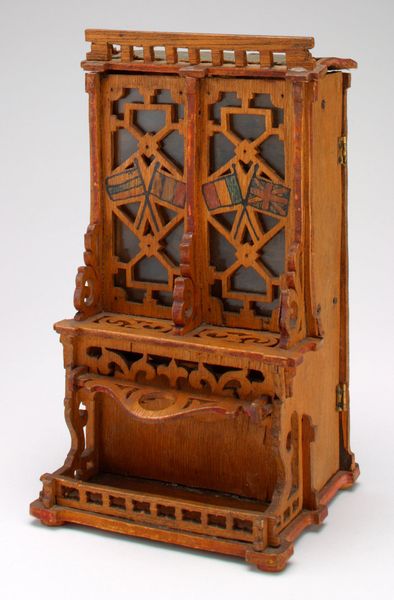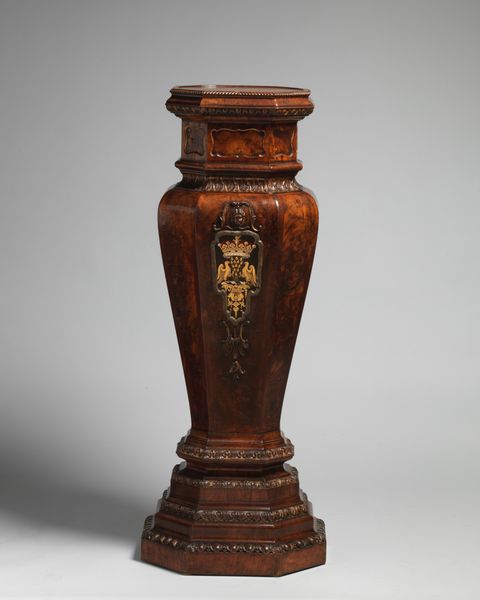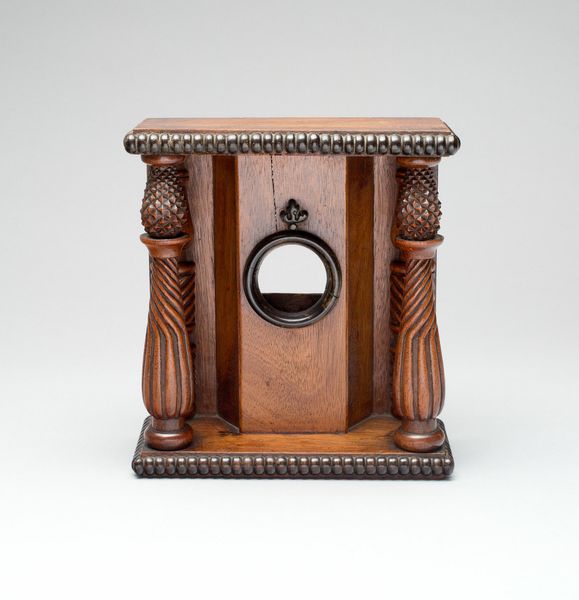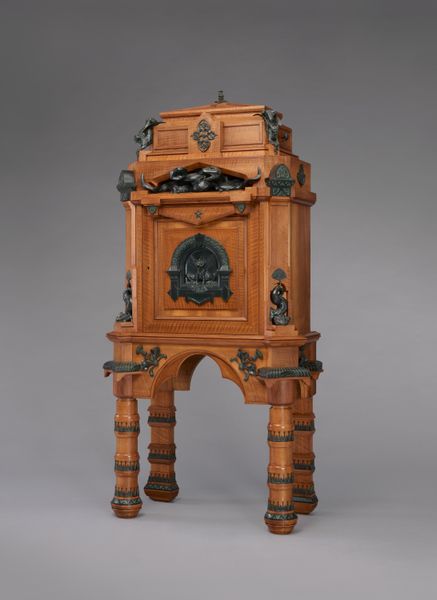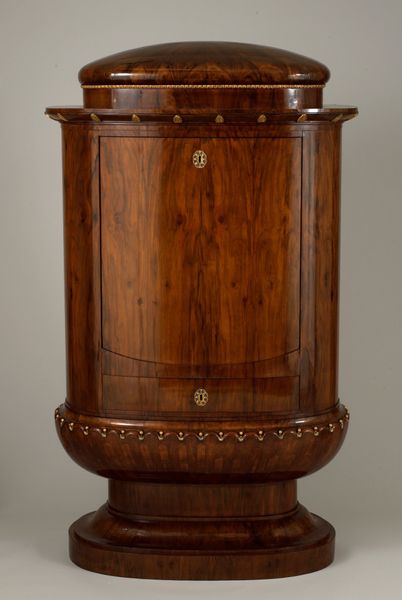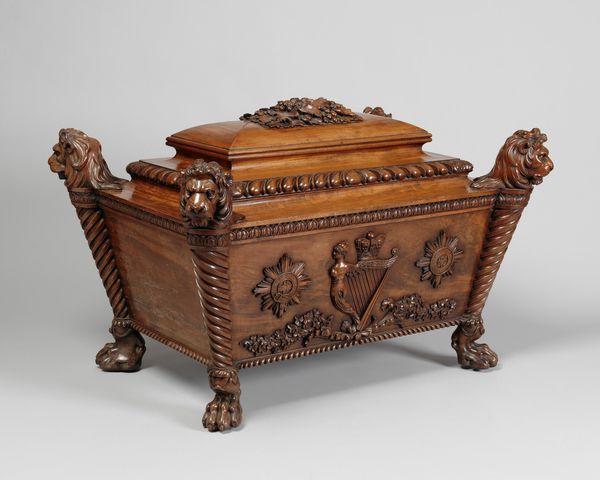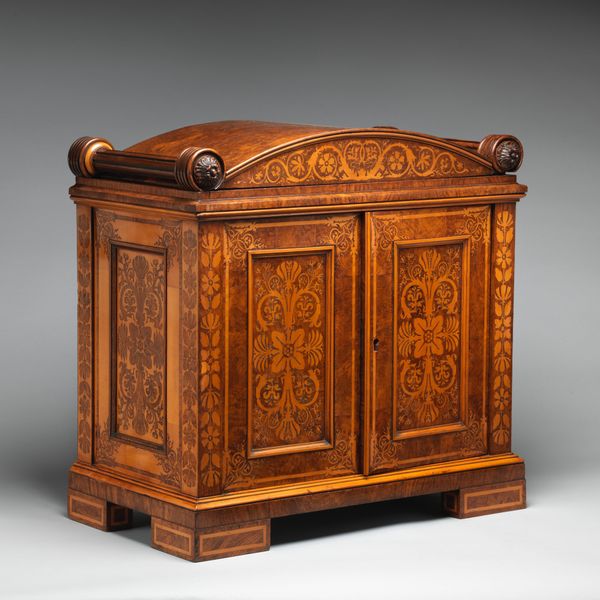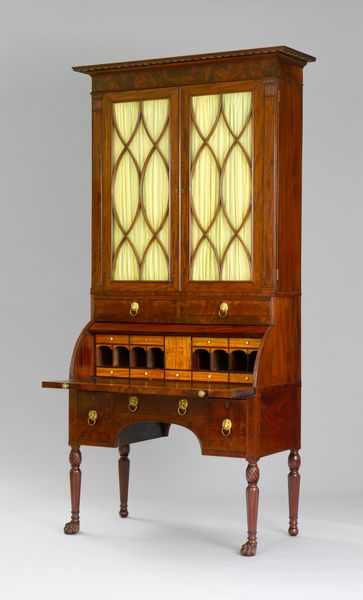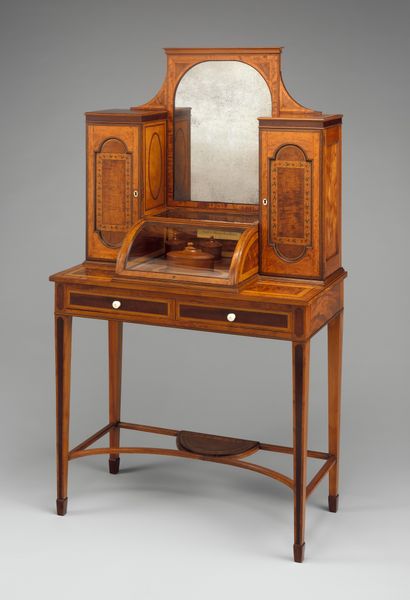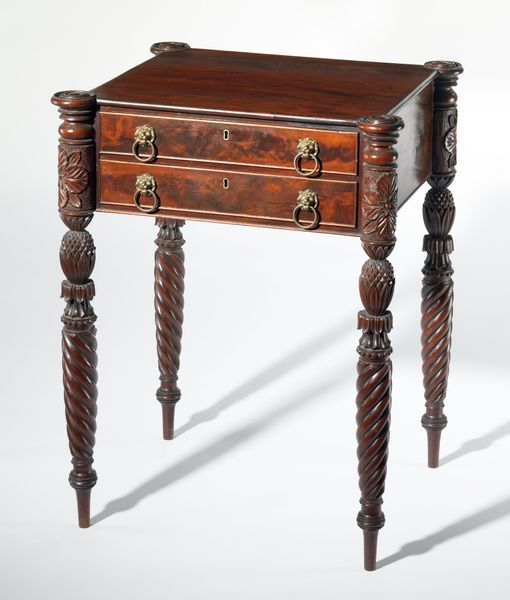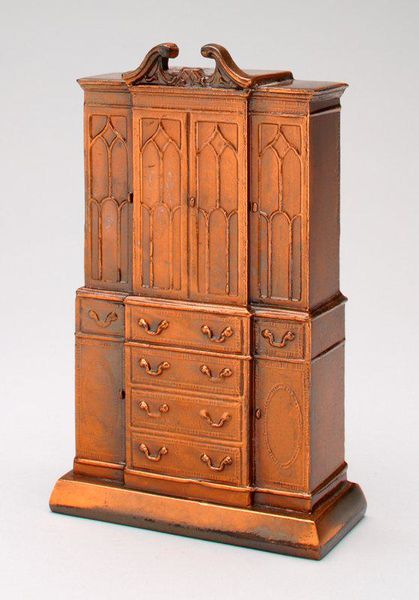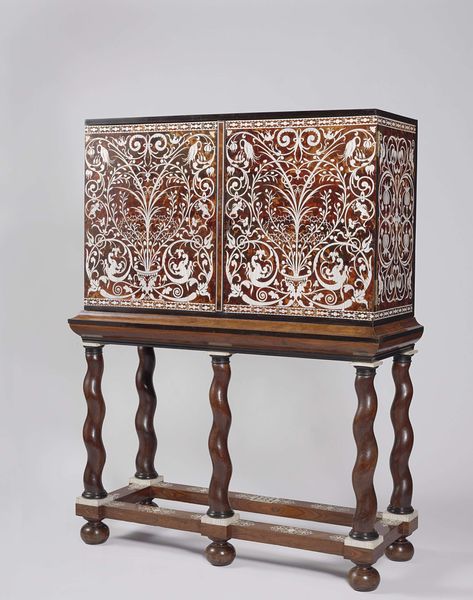
sculpture, wood
#
neoclacissism
#
sculpture
#
stoneware
#
classicism
#
sculpture
#
wood
#
decorative-art
Dimensions: .1a): H 19-5/8 in. (49.8 cm), H. of base 9-5/8 in. (24.4 cm); 1b): H. 10-7/8 in. (27.6 cm), Diam. 15-5/8 in. (39.7 cm); .1c): H. 36-1/4 in. (92.1 cm); .2a): H. 20-3/16 in. (51.3 cm), base H. 9-5/8 in. (24.4 cm); . 2b): H. 10-3/4 in. (27.3 cm), Diam. 15-3/8 in. (39.1 cm); .2c): H. 36-1/2 in. (92.7 cm)
Copyright: Public Domain
These urns and pedestals were made by Robert Adam, sometime in the late 18th century. The Neoclassical style evokes the art and culture of classical antiquity, which had a huge influence on European taste in this period. In Britain, this taste was closely bound up with the structures of Empire, the Grand Tour, and the gentlemanly connoisseurship that underpinned the art market. Adam was an architect and designer and a leading figure in the British Neoclassical movement. His work was characterized by its light, elegant forms, and its use of classical motifs. The fashion for Neoclassicism in Britain was driven by an elite that saw itself as the inheritor of classical values of reason and order. So, looking closely at the visual vocabulary of this piece, we can see how its visual language and cultural references are designed to appeal to the tastes of its time. Art historians can consult a wide range of documentary evidence such as letters, diaries, and inventories to understand the social context in which such objects were made and used. Ultimately, the meaning of these urns is contingent on the social and institutional context in which they were made.
Comments
No comments
Be the first to comment and join the conversation on the ultimate creative platform.

